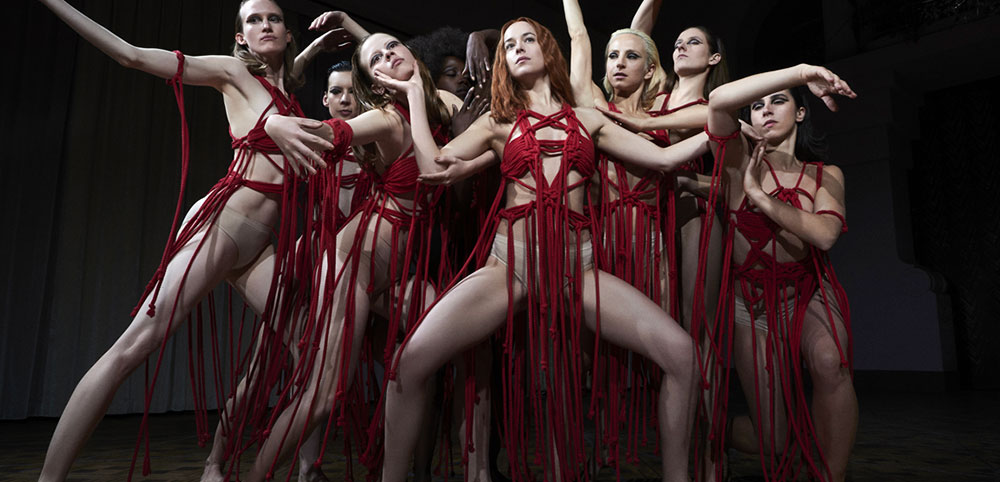Suspiria
The sisters of evil
Film. Luca Guadagnino revisits Suspiria, the classic Italian horror. He draws a film as aesthetic as impenetrable. Attempt to explain.
By Jacques Braunstein

Suspiria is as unexpected as it is stunning. Yet Luca Guadagnino (Call Me By Your Name) turns his back on the film he pays homage to. The Suspiria by Dario Argento (1978) and its Giallo aesthetic made of saturated reds and blues. Here, everything is in a shades of ocher and green, from the tiles of the fabrics to the tiles of the buildings. Even the blood turns chocolate. The yellowed image evokes the German fictions of the 70s, for better or for worse. Rainer Werner Fassbinder’s films (The Marriage of Maria Braun, The Year of the Thirteen Moons…), as well as Derrick (a special mention to the two cops, to the top of the raincoat with a disco shirt).
“It is about sorority as much as female power that can be as lethal and frightening as male brutality.”
Suspira 2018 presents a gallery of actresses with singular physics. Beginning with Jessica Harper, heroine of the original film, joined by the English Tilda Swinton, the German Ingrid Caven, the French Sylvie Testud and the young Americans Chloë Grace Moretz (Clouds of Sils Maria) or Mia Goth (A Cure For Wellness). Even Dakota Johnson, whose world knows plastic from 50 Shades of Grey, seems endowed with an unusual expression under the camera of the Italian director.
We find the main elements of the original story : the young dancer who lands in a prestigious German dance company, the three witches, strange disappearances… But the story is transported from Freiburg to Berlin and inscribed in a more precise historical context. Since televisions, radios and street demonstrations refer to extreme-left terrorism and more specifically to the Red Army Fraction of 1977-78. There is also talk of the Third Reich, and the history of the company, created in 1948 with the Volk choreography, which she will play for the last time 30 years later.
These many details question the idea of making a remake of 2:32 of a film that lasted in everything for 1h48. References intertwine and sequences multiply without much understanding. The film is probably a scholarly commentary on violence against women. It is about sorority as much about female power that can be as lethal and frightening as male brutality. But the too complex complexity of interactions between epochs, levels of reality, clans of witches, discourages more than anything else. The best is still to let yourself go to the final, morbid picture with bewildering seduction.


